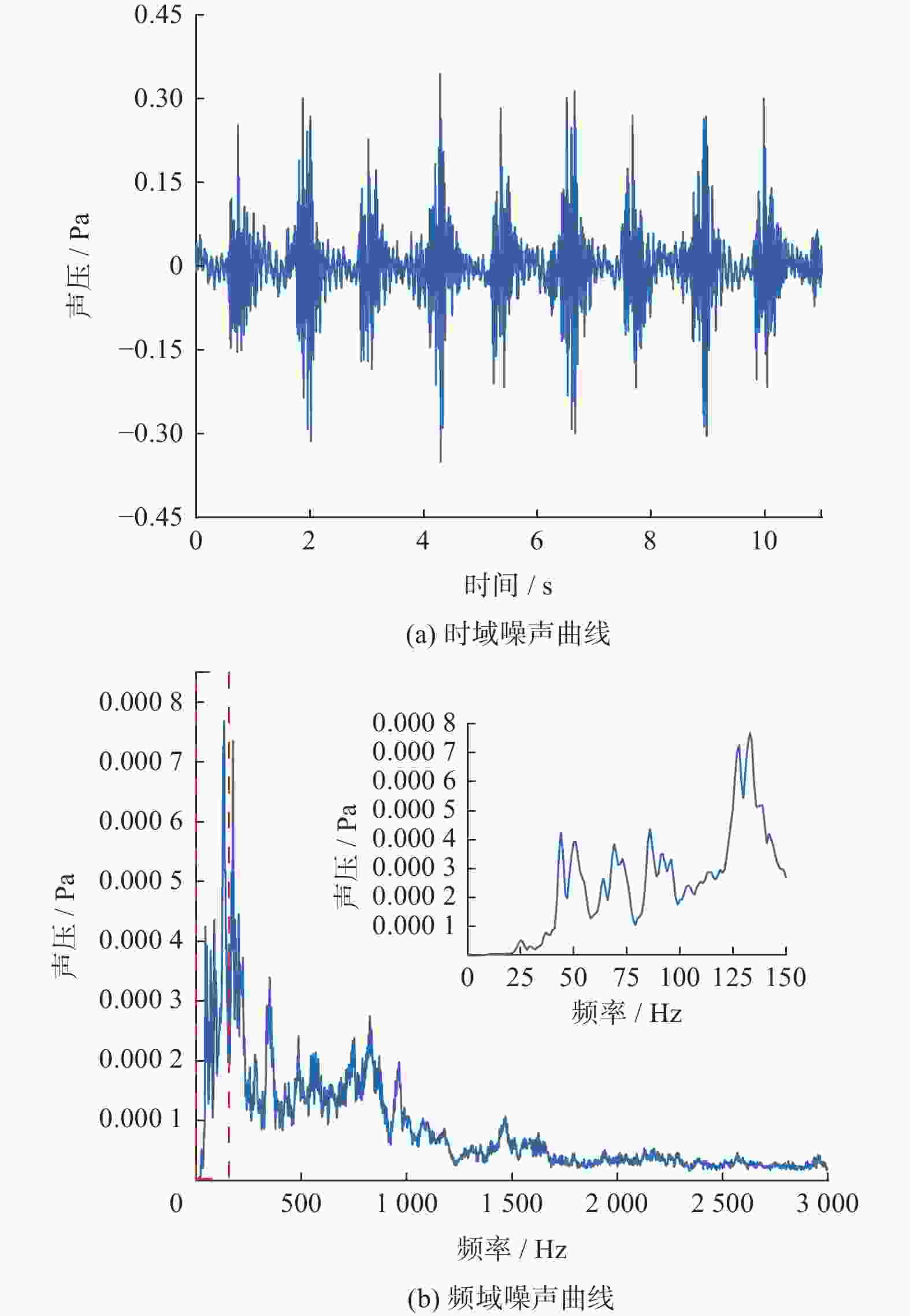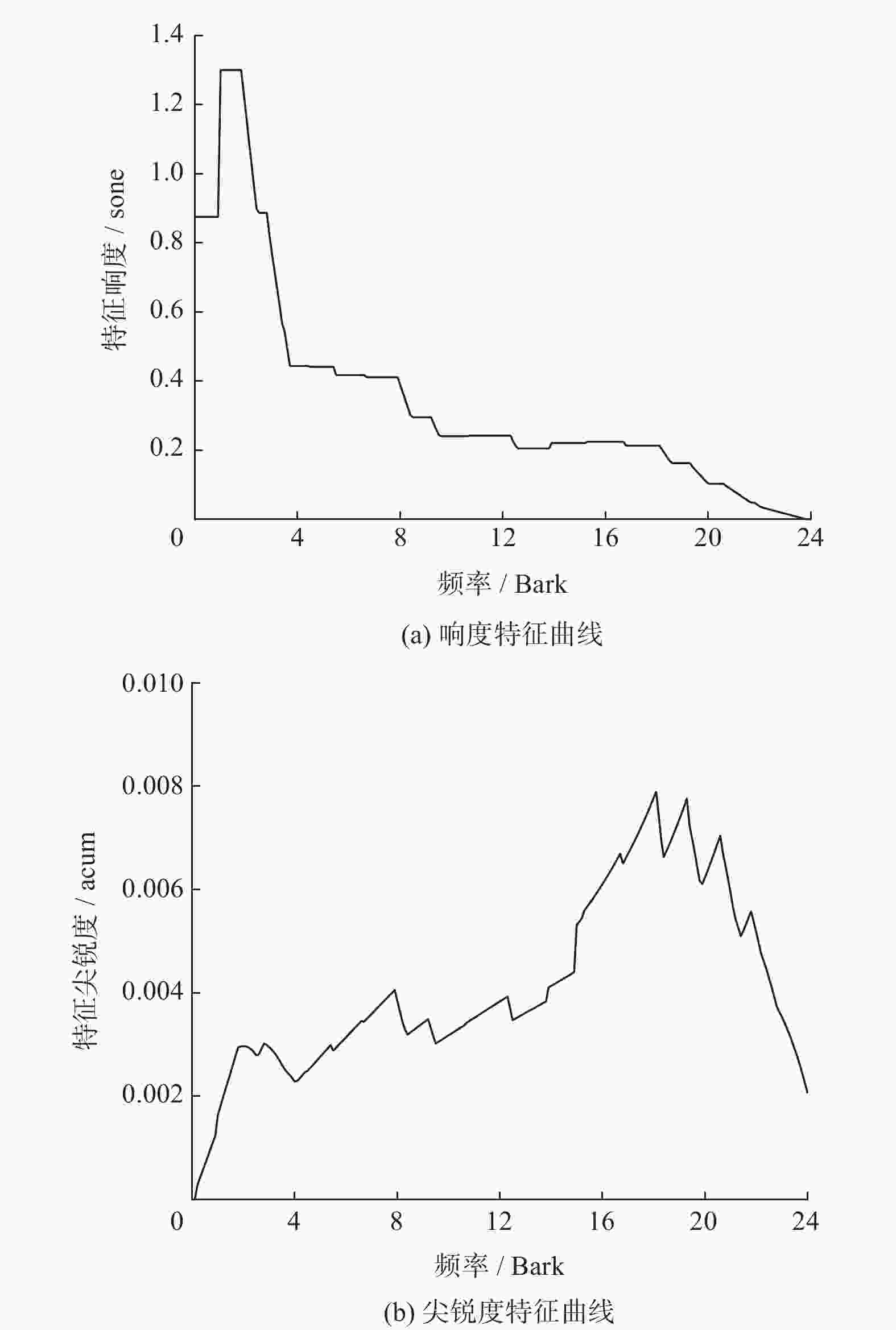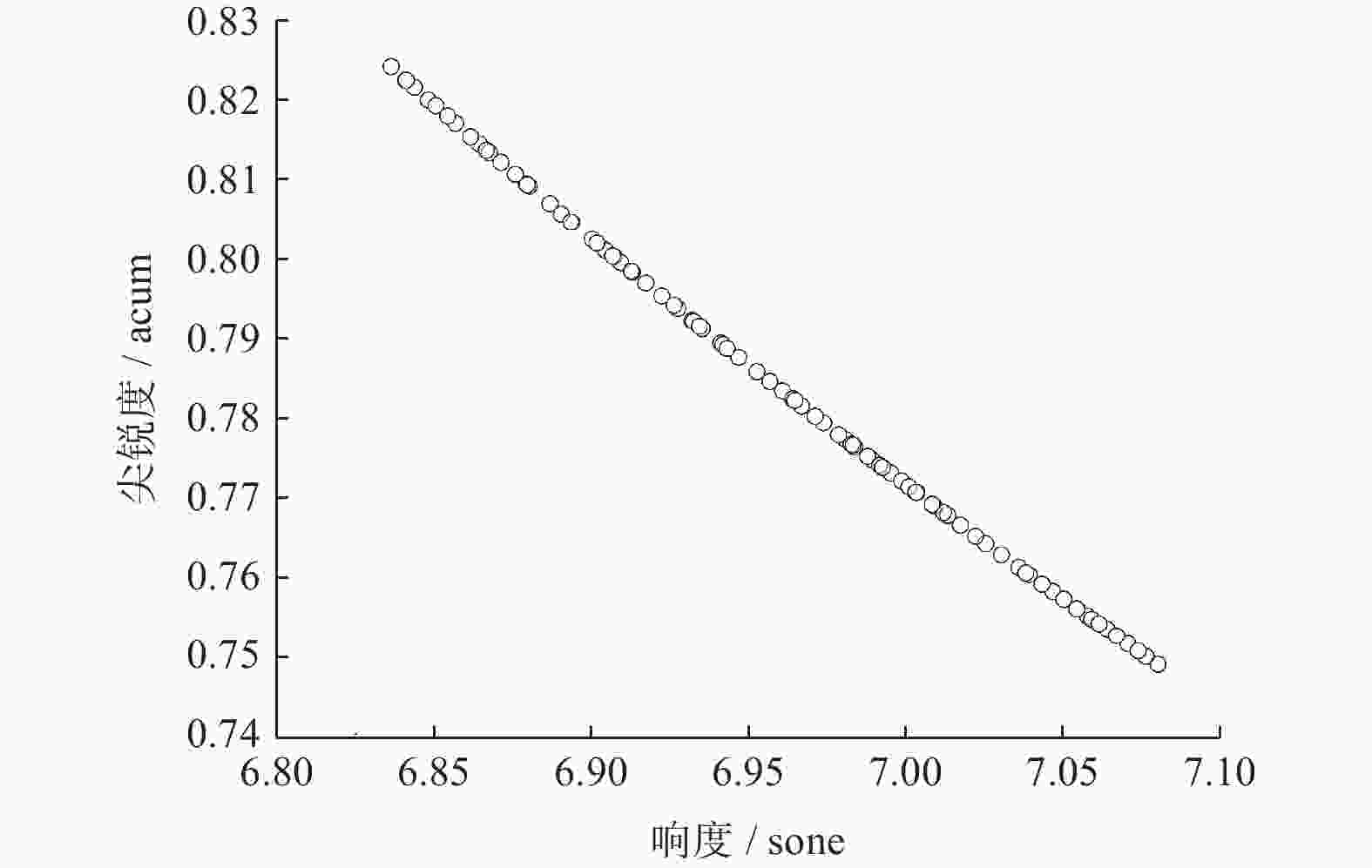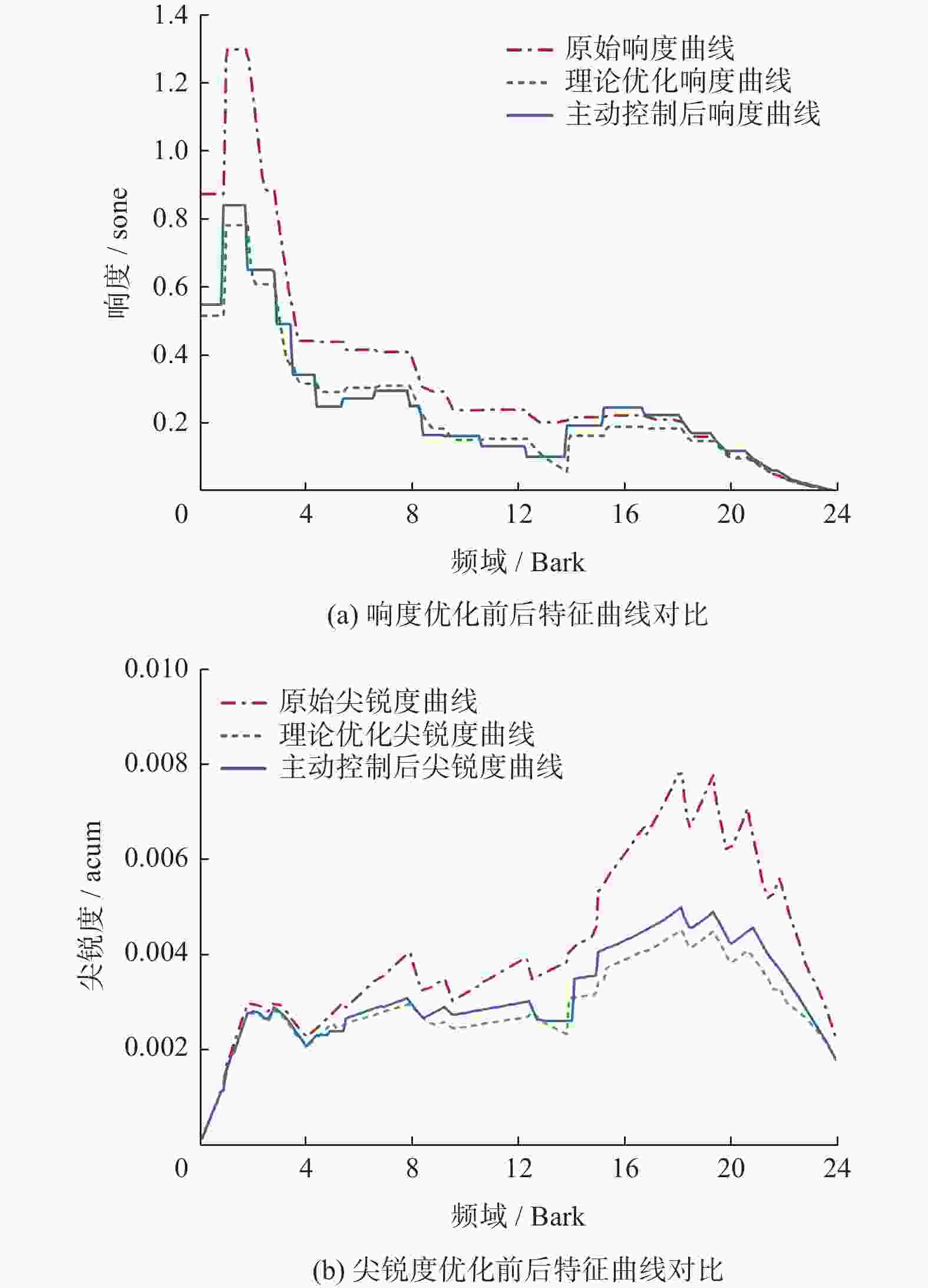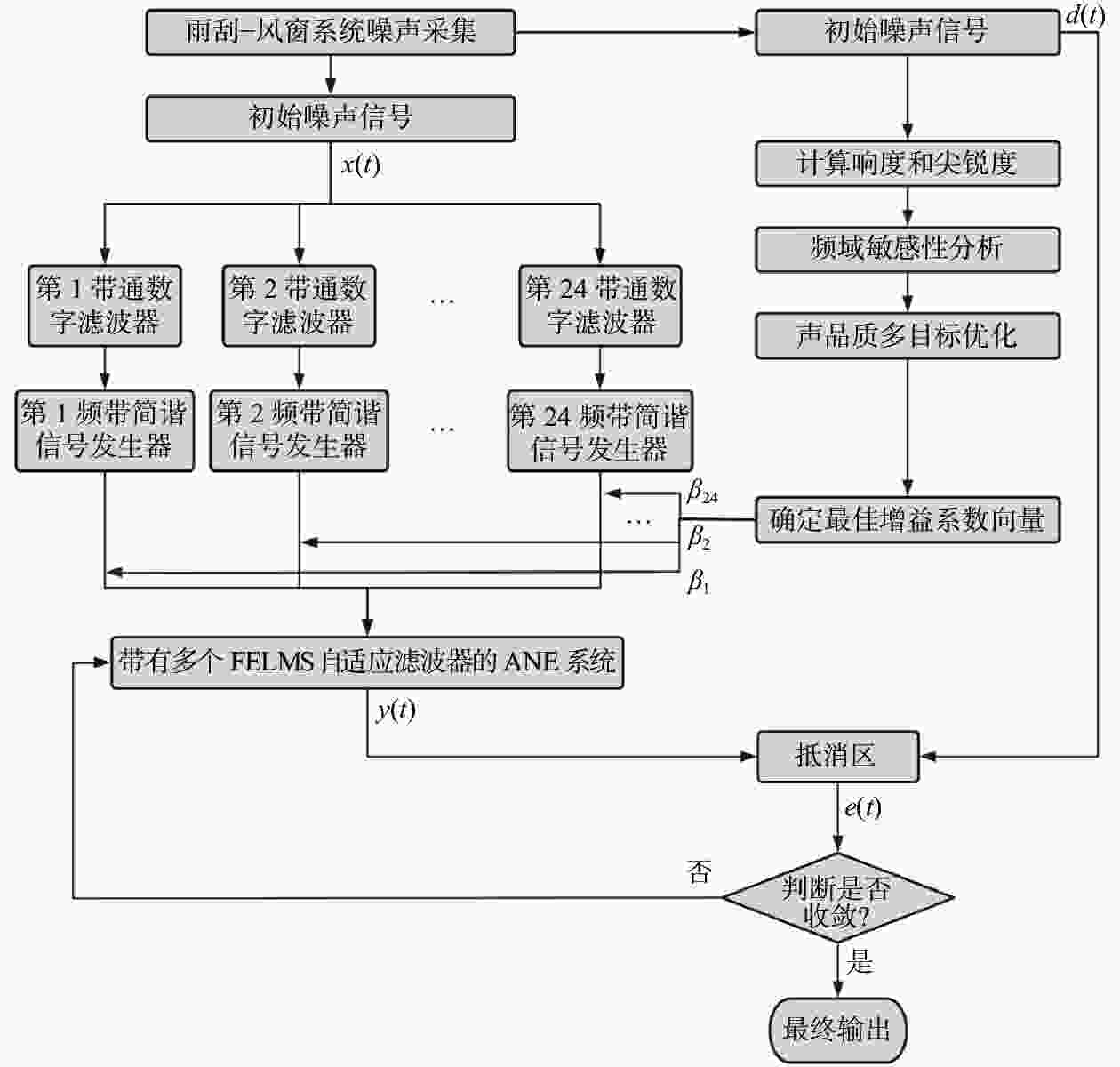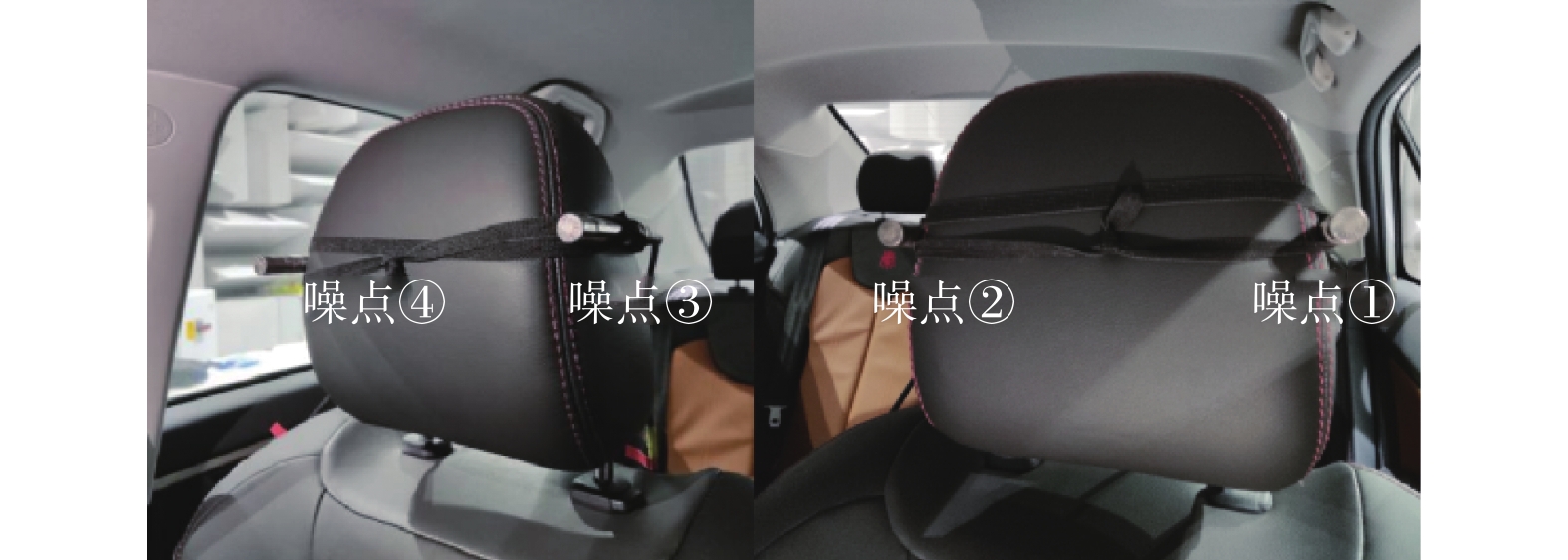A multi-objective optimization method for active control of loudness and sharpness of wiper windshield systems
-
摘要: 电动汽车动力系统噪声降低,导致雨刮反转引起的响度和尖锐度相矛盾问题更加突出,多目标优化方法有助于指导多频带协同主动控制,提升雨刮风窗系统声品质。通过实车噪声测试试验采集,分析雨刮运动过程中的噪声数据。基于各特征频带幅值与响度和尖锐度的直接映射关系构建多目标优化公式。敏感性分析确定一组影响响度和尖锐度变化最大的敏感频带,通过多目标遗传算法NSGA-Ⅱ求解得到响度和尖锐度综合最优时对应的敏感频带幅值,通过基于滤波残差最小均方算法(filtered-error least mean square algorithm, FELMS)自适应滤波器的ANE算法进行响度和尖锐度的主动控制仿真,验证最优解的可行性。结果表明,响度降低15.4%,尖锐度降低18%,响度达到94%最优解效果,尖锐度达到87%最优解效果,声品质得到改善。Abstract: The reduction of noise in the power system of electric vehicles has accentuated the contradictory issues between loudness and sharpness caused by wiper reversal. Multi-objective optimization methods can help guide multi-band collaborative active control and improve the sound quality of the wiper windshield system. Noise data during wiper operation were collected through actual vehicle test. A multi-objective optimization formulation was constructed based on the direct mapping relationships between the amplitude of characteristic frequency bands and loudness and sharpness. Sensitivity analysis identified a set of sensitive frequency bands that most significantly affect changes in loudness and sharpness. The multi-objective genetic algorithm NSGA-Ⅱ was employed to obtain the amplitude values of these sensitive bands yielding the best compromise between loudness and sharpness. Active control of loudness and sharpness was simulated using an active noise equalization (ANE) algorithm based on a filtered-error least mean square algorithm (FELMS) adaptive filter, verifying the feasibility of the optimal solution. The results show that the loudness is reduced by 15.4%, sharpness by 18%, achieving 94% of the optimal loudness reduction and 87% of the optimal sharpness reduction, demonstrating improved sound quality.
-
Key words:
- interior noise /
- wiper windshield system /
- sound quality /
- multi-objective optimization /
- active control
-
表 1 敏感性分析结果
Table 1. Sensitivity analysis results
特征
频带各频带声压级变化
对应响度值/sone各特征频带声压级变化
对应尖锐度值/acum1 8.31034 1.00986 2 8.30918 1.00986 3 8.34963 1.00532 4 8.51747 0.98565 5 8.47818 0.99055 6 8.52165 0.98565 7 8.45587 0.99596 8 8.85198 0.95821 9 8.73738 0.96994 10 8.74691 0.97412 11 8.55048 0.98954 12 8.49841 0.99567 13 8.57582 0.99279 14 8.55559 0.99660 15 8.60766 0.99790 16 8.71297 0.99985 17 8.50887 1.00086 18 8.51003 1.00122 19 8.56303 1.00504 20 8.51421 1.01374 21 8.51119 1.01693 22 8.57489 1.02305 23 8.58232 1.03430 24 8.53025 1.05137 表 2 主动控制处理前后的声品质参数对比
Table 2. Comparison of sound quality parameters before and after different active control treatments
参数 原始噪声 理论优化 主动控制仿真 参数结果 降幅/% 参数结果 降幅/% 响度/sone 8.30 6.94 16.4 7.02 15.4 尖锐度/acum 0.994 0.788 20.7 0.815 18.0 -
[1] ZWICKER E, FASTL H. Psychoacoustics: facts and models[M] . New York: Springer-Verlag, 1990. [2] 申秀敏, 左曙光, 韩乐, 等. 基于支持向量机的车内噪声声品质预测[J] . 振动、测试与诊断, 2011, 31(1): 55 − 58. doi: 10.3969/j.issn.1004-6801.2011.01.013 [3] HUANG H B, HUANG X R, LI R X, et al. Sound quality prediction of vehicle interior noise using deep belief networks[J] . Applied Acoustics, 2016, 113: 149 − 161. doi: 10.1016/j.apacoust.2016.06.021 [4] WANG Y S, SHEN G Q, XING Y F. A sound quality model for objective synthesis evaluation of vehicle interior noise based on artificial neural network[J] . Mechanical Systems and Signal Processing, 2014, 45(1): 255 − 266. doi: 10.1016/j.ymssp.2013.11.001 [5] XING Y F, WANG Y S, SHI L, et al. Sound quality recognition using optimal wavelet-packet transform and artificial neural network methods[J] . Mechanical Systems and Signal Processing, 2016, 66-67: 875 − 892. doi: 10.1016/j.ymssp.2015.05.003 [6] MOSQUERA-SÁNCHEZ J A, SARRAZIN M, JANSSENS K, et al. Multiple target sound quality balance for hybrid electric powertrain noise[J] . Mechanical Systems and Signal Processing, 2018, 99: 478 − 503. doi: 10.1016/j.ymssp.2017.06.034 [7] MOSQUERA-SÁNCHEZ J A, DESMET W, de OLIVEIRA L P R. Multichannel feedforward control schemes with coupling compensation for active sound profiling[J] . Journal of Sound and Vibration, 2017, 396: 1 − 29. doi: 10.1016/j.jsv.2017.02.016 [8] CHANG S C, CHEN S C. Dither signals with particular application to the control of windscreen wiper blades[J] . International Journal of Solids and Structures, 2006, 43(22/23): 6998 − 7013. [9] WANG Z, CHAU K T. Control of chaotic vibration in automotive wiper systems[J] . Chaos, Solitons & Fractals, 2009, 39(1): 168 − 181. [10] STENTI A, VANDEROSTYNE K, HAUSER F. A mechatronic approach to reduce wiper system reversal noise: development of a multi-objective optimization tool[C] //Proceedings of Inernational Conference on Noise and Vibration Engineering. Leuven: ISMA, 2012: 4033 − 4040. [11] 杨雪, 王岩松, 郭辉, 等. 雨刮反转过程摩擦特性分析[J] . 噪声与振动控制, 2022, 42(5): 21 − 28. doi: 10.3969/j.issn.1006-1355.2022.05.004 [12] 黄涛, 毕锦烟, 涂梨娥. 基于传递路径分析的电动汽车雨刮噪声品质优化[J] . 湖北汽车工业学院学报, 2022, 36(1): 33 − 37. doi: 10.3969/j.issn.1008-5483.2022.01.008 [13] 裴旭, 黄鼎友, 曾发林, 等. 基于主动噪声控制技术改善车内声品质[J] . 广西大学学报(自然科学版), 2019, 44(3): 667 − 676. [14] 张帅. 基于FxLMS算法的车内声品质主动控制方法研究[D] . 上海: 上海工程技术大学, 2019. [15] DEB K, PRATAP A, AGARWAL S, et al. A fast and elitist multiobjective genetic algorithm: NSGA-II[J] . IEEE Transactions on Evolutionary Computation, 2002, 6(2): 182 − 197. doi: 10.1109/4235.996017 [16] KUO S M, TSAI J. Residual noise shaping technique for active noise control systems[J] . The Journal of the Acoustical Society of America, 1994, 95(3): 1665 − 1668. doi: 10.1121/1.408555 [17] 刘宗巍. 车内噪声声品质建模分析与自适应主动控制研究[D] . 吉林: 吉林大学, 2007. -





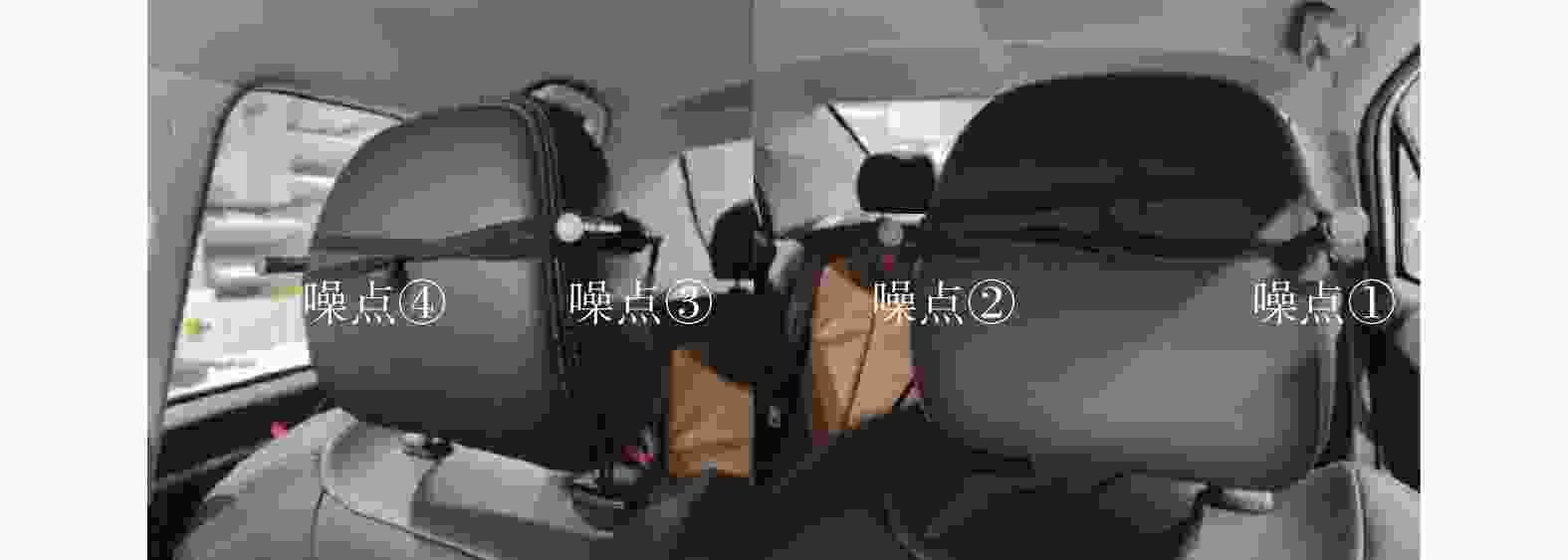
 下载:
下载:
